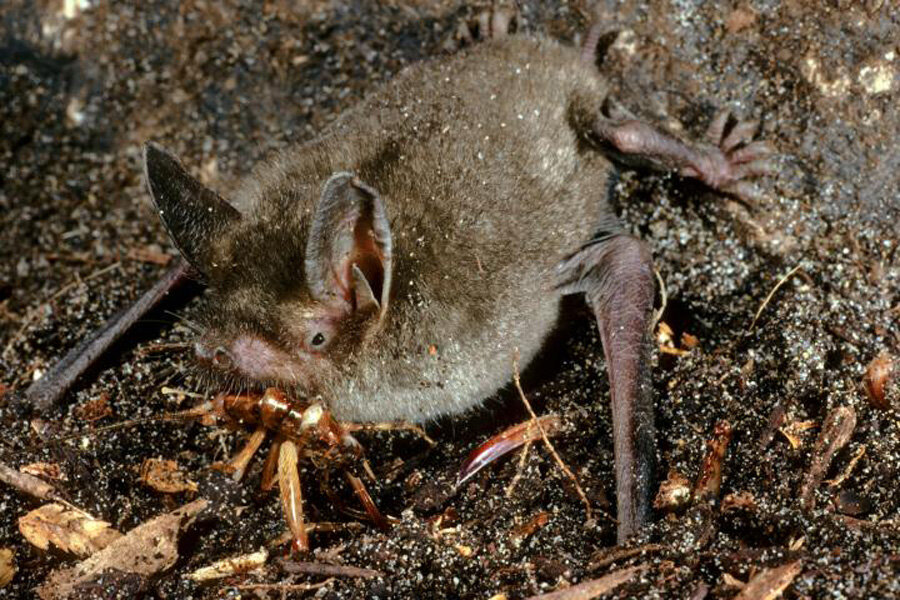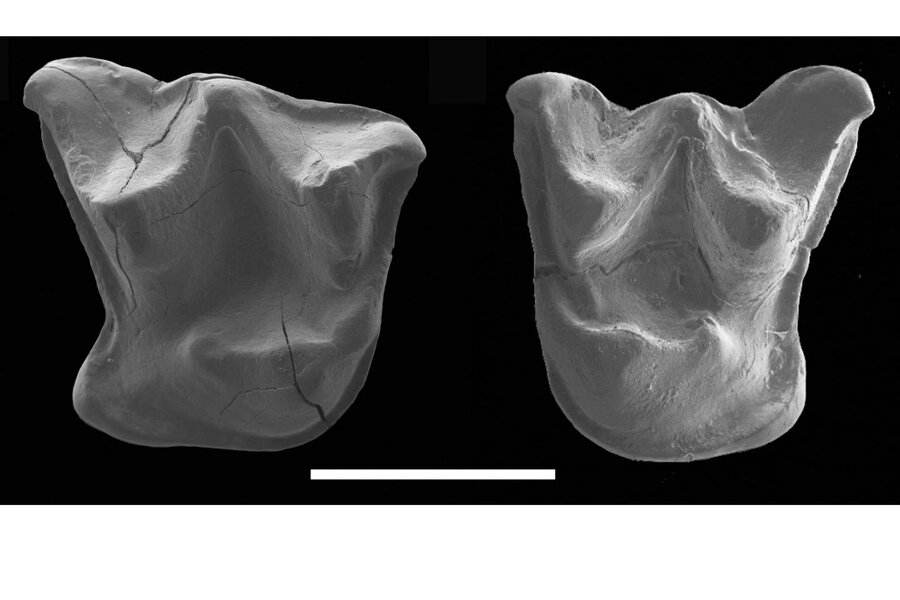Ancient bat walked, rather than flew, over New Zealand
Loading...
Mystacina miocenalis wasn’t your typical bat. It was about three times larger, and it wasn’t much of an in-flight hunter.
Researchers have unearthed the remains of a previously unknown bat species at New Zealand’s Lake Manuherikia site. The specimen, described Wednesday in open-access scientific journal PLOS ONE, represents the oldest fossil of its kind on the island.
Humans first arrived in New Zealand less than 900 years ago. Prior to that, there were only three species of terrestrial mammal on the island, all of them bats. With the presumed extinction of the New Zealand greater short-tailed bat, last sighted in 1967, only two remain. One, the New Zealand long-tailed bat, is similar to other extant bats. The other, Mystacina tuberculata or New Zealand lesser short-tailed bat, is unusual in its chiefly terrestrial lifestyle.
Short-tailed bats do hunt flying insects, but they also forage through leaf litter in search of food, earning them the nickname ‘burrowing bats.’ They walk on their wrists, folding their wings back for protection – similar to, but generally more efficient than the “bat bot” developed by Swiss researchers earlier this year. The lesser short-tailed bat is the only living species within the genus Mystacina, and is considered a threatened species by conservationists.
Until now, the oldest known Mystacina fossil was dated to 17,500 years ago. The newly-discovered M. miocenalis sets the fossil record back significantly, to between 16 and 19 million years ago. At 40 grams, this ancient bat would have been about three times larger than the average modern bat. And according to lead author Suzanne Hand, M. miocenalis probably did even more terrestrial hunting than its descendants. Insect-catching requires small size and agility, so New Zealand’s oldest bat was probably better suited to taking down larger prey from the ground.
“We didn't expect them to be so similar in morphology to Mystacina tuberculata,” Dr. Hand, a paleontologist at the University of New South Wales, says.
“We thought that if these walking bats were present, they might be more like the Australian fossil ones. The fact that they are not suggests a number of different scenarios. Either the Australian ancestors of New Zealand bats dispersed to New Zealand across the Tasman much earlier than 16-19 million years and by then had evolved significantly and diversified in New Zealand; or Australia and New Zealand were colonised independently by two different lineages of mystacinid bats. In New Zealand the group survived, but in Australia they went extinct before around 5 million years ago.”
Surprisingly little has changed for Mystacina, other than its size. Plant and insect fossils recovered at Lake Manuherikia suggest that the ecosystem of Miocene New Zealand was similar to that of the modern day, despite a shift from subtropical to temperate climates. Researchers hope this new specimen can provide insight into how bats evolved and established populations on the island.
“Knowing precisely when and how bats arrived in New Zealand provides important information about the movements of bats between islands of the South Pacific,” Hand says, “and the capacity of different families of bats to establish populations on islands. Bats are often important pollinators and seed dispersers for forests on these islands, and we need information on pre-human biodiversity levels in order to understand and better protect them. Understanding the connectivity and movements between bat faunas on different landmasses is essential for evaluating biosecurity threats.”









